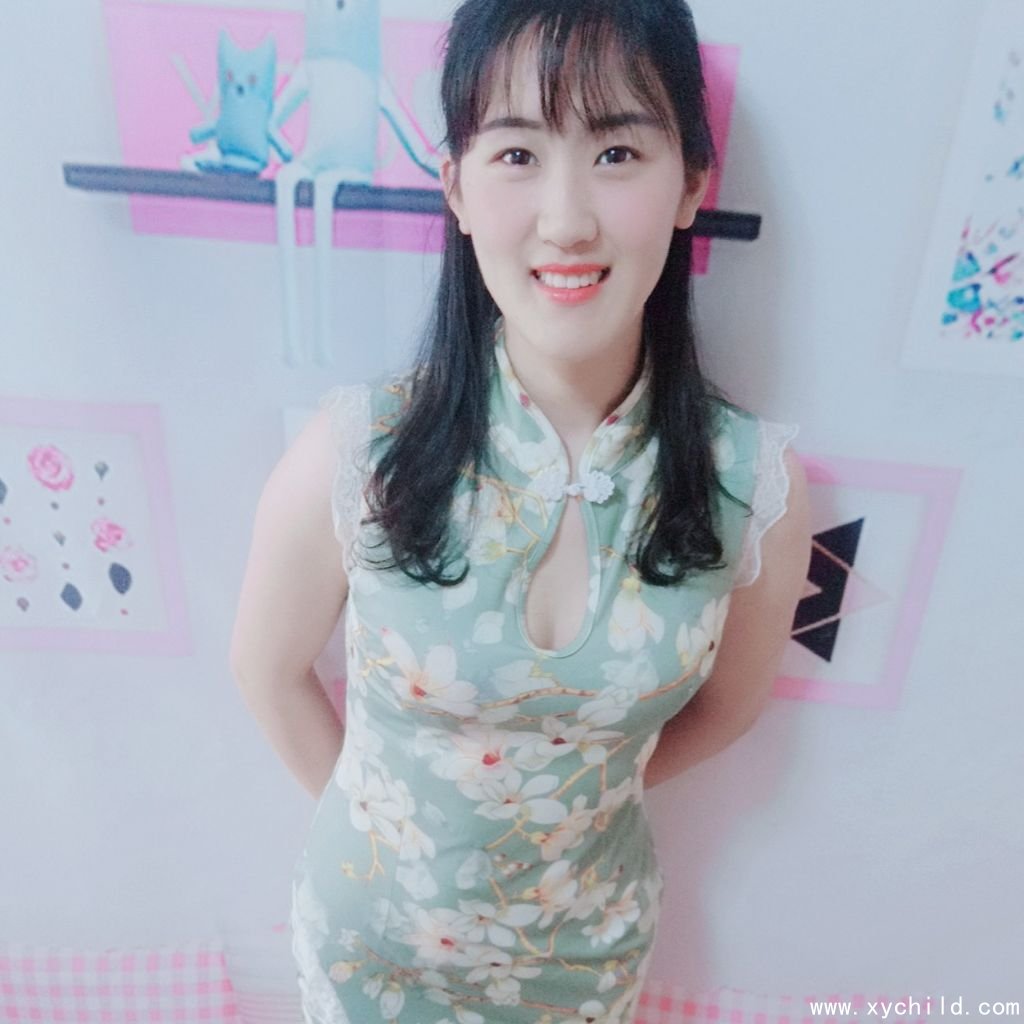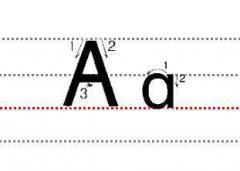如果首句声调平缓,不低沉,随便读,声调不高不低,结尾自然拉长。第二句,声音洪亮,没有结尾。第三句,为远方的人清楚地表达了悲痛的声音,应该向下重读。第四句语气短促,急切地念给芝芝。比如打鼓时,用木槌敲击鼓的中心,发声为(东),为平音。如果再敲击鼓面,声音是(Dong),也就是上音。如果你用木槌在鼓的中心用力敲击它,声音就会(冻结),这就是消除的声音。若一手搓鼓面,另一只手用力敲击,则为(十)声,即入声。一言以蔽之,四种音调有三点不同。平的时候有尾音,上去的时候没有尾音。一个区别也是。平声平而尾声长,哀声远而尾声短,二者不同。高二声无终音,但高声响亮明亮;如果你能辨别出不同之处,那么你就可以用单词来练习。
练习的方法是把四个字放在平面上。根据阅读方法,用右手的食指作为手势。读平调时,将手指放在桌子的左侧,慢慢向右移动,移到右侧的尽头。它也停了下来。桌子的宽度约为两英尺。朗读第一句时,将手指放在桌子中间索的拼音和组词,抬起,离桌子约一英尺,声音停止。阅读声音时,将手指从桌子上向下移动,然后用力按压手指,大约在桌子下方一英尺处,声音就会停止。阅读声音时,指向对面,距离身体约一英尺,声音停止。就这样,这四个字一天读一百遍,声音又高又慢,不能有半点差错。三天后,依依用了四个字(dong,平声),(dong,上声),(frozen,去声),(du,进入声),和以前一样练习。再过三天,无论念什么字,都会升到三个音,进入音的字自然会脱口而出。为了检查练习中是否有错误,下面将列出四声之字:(按从上到下的顺序)
东东东渡、东东东渡、空空控哭、萌萌母、龙源龙路
钟肿烛、宋素、宋素、容永玉宇、姜姜珏、芝芝芝芝
石狮对太阳的服务,石雅测试失败,医生的意思一、吉吉吉吉吉,私史率
李丽丽法则,未央未央,不诽谤博福,于玉月,曲不肯挖
巨觉、阔阔、嘟嘟嘟、五呼火、咕咕咕咕
西洗细膝,梨礼板栗,咪咪咪咪,嘉洁洁,拍拍败
爱海爱玉,盖哥,台湾闲散队,甄珍珍,沉孙顺时
仁忍,阴阴阴B,寻金素记,温吻问事,粉粉屎刷
元阮元月,打拐,番禺丸切,甘欢切,丹药缓变功
探探叹息,仙臣仙色,剑剑姬,仙剑仙邪,剑剑节
千剑诀、穿转山舌、剑剑剑劫、潇潇潇潇、廖廖吕素
由瑶瑶、娇娇娇、高娇阁、早灶座、淘淘海贼团提供
格鬼格谷、咳咳咳、麻麻聚魔、亚亚夏、巴巴波
洋洋洋药、张漳珏、长章让若、江江酱麻雀、香饽饽
洋洋洋月、两两略、清境境溪、境境境、盈盈盈盈
丁丁丁地、郑铮铮铮、悠悠悠一、秋守时、邹久责任
金金禁告急,阴阴阴一,含暗悔,甘敢氰化鸽,烟烟烟叶
悬脸继续狩猎,先贤诱捕,昏迷减护甲
第三节,平喆
一、什么是平整度
汉语四声分为平调和平调两大类。平意味着水平,音调没有高低起伏; zhe的意思是倾斜不均匀,音调有高低起伏。
用“○”表示平,“●”表示平,“◎”表示平易平,“⊙”表示平。
二、现代中国乒乓球
现代汉语平:普通话第二声一、。
现代汉语中的哲:是普通话三、的第四声。
《汉语新韵》各韵中,发阴平、阳平的字称为平声字;发上声和下声的字称为气字。肠溶词不再区分。就是普通话中的平平分辩原则,只分平平,不分传入音。比如奚、奚、奚、奚四个字,其中一两个(xi, Xi)是平音,三四个音(洗、戏)是后缀。
这样一来,每个韵其实自然地分成了平调和平调两部分。使用新的韵词和带节奏的卡片时,切换到气调,最合适的就是使用带节奏的韵词。
为了更方便同时使用《平水韵》,《中国新韵》在每首押韵的后面标出了押韵的平声字所包含的原声字。黄音部分的原声字不再标注。
三、中国古代平者
古四声是南北朝齐梁时期沉月、周庸等学者发现的。梁武帝问朱懿:“你们这些文人整天议论四次,什么意思?”朱易道:“就是这个意思。”进入声音。
古汉语平:古四声中的平声。
古汉语车:是古四声的上下三声。
因为平调没有高低起伏,较长,而上下三调有高低起伏,较短,从而形成平平两种。以(dong,平音)、(dong,上音)、(frozen,去音)和(du,进入音)四个字为例,其中east为平音,dong、cold、du声为气声。
四、扁平化规则
古诗的韵律和韵律由一个句子中的二字一音组成,最后一个字是单音节,即五字三字和七字四字。每个句子的后缀是最重要的,后面的音节比前面的音节重要,同一个音节后面的偶数比前面的奇数重要,偶数是形成节奏的关键,即就是,五字中的四二字重要,七字中的六四字重要。两个字很重要。每个句子的后缀是固定的,不能更改,倒数第三个字符偶尔可以更改,倒数第七个字符一般可以更改。
平喆是诗性度量的术语。诗中若将平、平两种声调交替使用,则声调可以多样化,不单调。虽然有很多细节,但水平与曲折的和谐是重要因素之一。
诗歌,尤其是韵律诗中,平平交错有一定的规律。总结为三句话:
平哲在这句话中可以互换使用。
平哲是反句的反义词。
平喆粘在两片之间。
1.平喆在这句话中交替出现
例如:毛泽东的“七定律长征”:
红军不怕艰苦的远征,○○●●●○○
千山万水只是观望。 ●●○○●●○
五个山脊在细浪滚滚,●●○○○●●
乌蒙离开泥丸。 ○○●●●○○
金沙水暖到云崖,○○●●○○●
大渡桥冷冷地跨过铁索。 ●●○○●●○
岷山的雪更让我开心,●●○○○●●
三军以后会幸福的。 ○○●●●○○
金沙水派云牙暖,就这句话来说:平起句,平平后平平,平平后有平平,平平后有一个平; , 崖) 平而平, 末字(暖) 平。
大渡桥过铁锁汉,就这句话而言:句首軄,后接咻咻,咻咻后咻咻,咻咻后咻;横、索)为軄平軄,后缀(冷)为平。
这是平平交替,平平交替是造句规律。平平交替可以使韵律和谐,音调有韵律悦耳。如果没有交替,那就是损失。移位,会出现节律紊乱,音调心律失常。
2.平喆是反句中的反义词
以毛泽东的“七定律长征”为例。金沙句的第三对联是大都句,金沙句是出句和上句,大都句是反句和下句。 (金沙)至(大都),平至浙; (水排)至(桥横),折至平; (云崖)至(铁索),平至哲; (暖)到(冷),到平右。
这是上下句的平方对立,平方对立是组合规则。平直的对立可以使句子丰富多样,引人入胜。平喆在传出句与对句中不矛盾,称为disparity。错了,上下两句是一样的。
3.平喆粘在两片之间
以毛泽东的“七定律长征”为例。二联下句是无梦,开头是平平哲。平,平,平。这是两联之间的平方贴合,平方贴合是构图的规律。更多内容在古诗韵律中解释。
五、如何区分扁平与扁平
如果你的方言有声音(比如你来自江浙或山西、湖南、华南),那么问题就很容易解决了。在那些有入声的方言中,有四个以上的声调,不仅平声分阴阳,上声、排队声、入声也常分阴阳。例如,广州音声也分为三类。这很容易,只要把它们结合起来,比如把阴平阳平结合成平生,把阴伤、阳伤、阴曲、阳曲、阴印、阳印合成气生,就是这样问题是你必须先弄清楚你方言中有多少声调。这是找懂语气的朋友帮忙。如果你在汉语课上已经学会了地方声调和普通话声调的对应关系,并且掌握了自己方言的声调,那就更好了。
如果你来自湖北、四川、云南、贵州和桂北,那么你方言中的韵律字属于阳平。这样,要特别注意阳平字,其中有些古时属于入声字。至于哪些字属于音,哪些字属于阳平,就得查字典或者押韵书了。
如果你是北方人,那么区分平平的方法与湖北等地略有不同。由于进声的古汉字大都变了棋的声调,所以棋的声调也是气的声调;有的字改了大调,大调也是气的调。所以,字从入到变,从进到变,并不妨碍我们区分flat和ze;只从进到变平(阴平,阳平)就很难区分平和泽。
如果遇到韵律规定使用平调的地方,而今天读的一个词在诗中是平调,难免会引起我们的怀疑。这时候,我们可以通过查字典或者押韵书来解决。
注意:
韵尾为-n或-ng的地方,不是入音。
zi、ci、si这三个音节不是音节。如:首都思思司。
韵母 er 和 ui 两个音节不是音节。如:饵尾会规。
简而言之,传入声音的问题是区分扁平和扁平的唯一障碍。这个障碍可以通过查字典或押韵书完全消除。但是比较麻烦,也可以依靠下面的一些方法来判断传入的声音:
1.(博德加吉之子,双声字):b、d、g、j、zh、z六个声母的二声(阳平)字都是古字。
b:后记白波波波波驳

d:回复大德嘀嘀,敌嫡翟翟落入叠盘,独读嘟嘟嘟嘟。
g:格格果果
zh: 扎扎家选择折蛰轴,竹妻竹竹竹竹竹竹竹竹竹竹竹竹竹竹竹竹竹竹竹竹竹竹竹竹竹竹竹竹竹竹竹竹竹竹竹竹竹竹竹竹竹竹竹竹竹竹竹竹竹竹竹竹竹竹竹竹竹竹竹竹竹竹竹竹竹竹竹竹竹竹竹竹竹竹竹竹竹竹竹竹竹竹竹竹竹竹竹竹竹竹竹竹竹竹竹竹竹竹竹竹竹竹竹竹竹竹竹竹竹竹竹竹竹竹竹竹竹竹竹竹竹竹竹竹竹竹竹竹竹竹竹竹竹竹竹竹竹竹竹竹竹竹竹竹竹竹竹竹竹竹竹竹竹竹竹竹竹竹竹竹竹竹竹竹竹竹竹竹竹竹竹竹竹竹竹竹竹竹竹竹竹竹竹竹竹竹竹竹竹竹竹竹竹竹竹竹竹竹竹竹竹竹竹竹竹竹竹竹竹竹竹竹竹竹竹竹竹竹竹竹竹竹竹竹竹竹竹竹竹竹竹竹竹竹竹竹竹竹竹竹竹竹竹竹竹竹竹竹竹竹竹竹竹竹竹竹竹竹竹竹竹竹竹竹竹竹竹竹竹竹竹竹竹竹竹竹竹竹瓶
z:昨天挑了杂凿子来责备小偷和棋子
2.(Dettler,然后是颜色测量,六个俄语拼写):其中六个声母d、t、l、z、c、s拼写为最后的e,不管读多少音,这是一个古老的发音。
de: 德德
te: 天蝎座
乐:乐乐乐乐
泽:那就选泽泽来怪狭隘一个
ce:侧测厕所政策手册
se:害羞小气
3.(宽表辍学,五声):其中k、zh、ch、sh、r这五个声母,无论多少次,都以尾uo拼。都读了,都是古字。 .
kuo: 宽胸蝎子
卓:卓卓卓卓卓卓卓卓
chuo:戳 Chuo,啜饮,退出
硕:说你好帅
若:若远若。
4.(不要诽谤,重叠捏表,七):其中b、p、m、d、t、n、l的七个声母用韵母拼,即no不管读多少遍索的拼音和组词,都是老生常谈。
别:别偷懒
饼图:一瞥
mie:灭蝎
死:死,间谍和比目鱼。除了爸爸
tie:领带领带领带领带
nie:捏住镊子和小镊子,又夹又咬镊子
谎言:谎言凶猛而混乱
5.(给黑贼,5A):凡是5个声母d、g、h、z、s都跟最后的ei拼写,不管读多少遍,都是古字。
dei:嘚
gei:给
嘿:黑嘿
zei:小偷
sei: 插头
6.(佛法音):f字尾加a和o,读多少遍都是古汉字。
fa: Fafa 减重阀惩罚
佛:佛
7.结尾元音ue的词都是古音词。 (粤语韵)
ue:悦悦悦悦悦悦悦悦悦悦悦悦悦悦悦悦悦悦悦悦悦悦悦悦悦悦悦悦悦悦悦悦悦悦悦悦悦悦悦悦悦悦悦悦悦悦悦悦悦悦悦悦悦悦悦悦悦悦悦悦悦悦悦悦悦悦悦悦悦悦悦悦悦悦悦悦悦悦悦悦悦悦悦悦悦悦悦悦悦悦悦悦悦悦悦悦悦悦悦悦悦悦悦悦悦悦悦悦悦悦悦悦悦悦悦悦悦悦悦悦悦悦悦悦悦悦悦悦悦悦悦悦悦悦悦悦悦悦悦悦悦悦悦悦悦悦悦悦悦悦悦悦悦悦悦悦悦悦悦悦悦悦悦悦悦悦悦悦悦悦悦悦悦悦悦悦悦悦悦悦悦悦悦悦悦悦悦悦悦悦悦悦悦悦悦悦悦悦悦悦悦悦悦悦悦悦悦悦悦悦悦悦悦悦悦悦悦悦悦悦悦悦悦悦悦悦悦悦悦悦悦悦悦悦悦悦悦悦悦悦悦悦悦悦悦悦悦悦悦悦悦悦悦悦悦悦悦悦悦悦悦悦悦悦悦悦悦悦悦悦悦悦悦悦悦悦悦悦悦悦悦悦悦悦悦悦悦悦悦悦悦悦悦漾
nue:疟疾滥用
略:略读
绝:绝绝绝绝绝绝角蕨绝噱头绝绝绝绝绝绝绝绝
que:缺乏酷儿,但有喜鹊的胆怯。除了跛脚
xue: 雪雪学会了从雪中割血。除了靴子
8.(普方意思相近,iuo韵尾):一个词有两个共同读音和方言,意思相同或相近,i或u或o韵尾,多为古音.
读音为e,读音为ai:彩书捡房子和宅宅
读音是o,读音是ai:Bai Bai Bo Mai Mo Mai
读音是o,读音是ao:薄剥皮摸壳
读音是uo,读音是ou:肉粥轴煮熟
读音u,读音iu:刘璐洲
读音是ue,读音是ao:药疟键咀嚼脚角割血
9.(谐波部首):谐波部首也可用于确定传入的声音字符。
“白”是个声字,然后博、博、白、排、白等也是声字。
“出”是声字,所以蜀、滜、曲、卓等也是声字。
“夹”是声字,夏、窄等也是声字。
“气”是声字,臂、蹲、貉等也是声字。
“合”是一个声字,那么Qia、Qia、A、鸽子、塔等也是声字。
10.(按字母顺序):常用古汉字
C:毒刺、刺、刺
D:滴滴滴滴滴滴滴滴滴滴滴滴滴滴滴滴滴滴滴滴滴滴滴滴滴滴滴滴滴滴滴滴滴滴滴滴滴滴滴滴滴滴滴滴滴滴滴滴滴滴滴滴滴滴滴滴滴滴滴滴滴滴滴滴滴滴滴滴滴滴滴滴滴滴滴滴滴滴滴滴滴滴滴滴滴滴滴滴滴滴滴滴滴滴滴滴滴滴滴包迪迪迪迪迪迪迪迪迪迪迪迪迪迪迪迪迪迪迪迪迪迪迪迪迪迪迪迪迪迪迪迪迪迪迪迪迪迪迪迪迪迪迪迪迪迪迪迪迪迪迪迪迪迪迪迪迪迪迪迪迪迪迪迪迪迪迪迪迪迪迪迪迪迪迪迪迪迪迪迪迪迪迪迪迪迪迪迪迪迪迪迪迪迪迪迪迪迪迪迪迪迪迪迪迪迪迪迪迪迪迪迪迪迪迪迪迪迪迪迪迪迪迪迪迪迪迪迪迪迪迪迪迪迪迪迪迪迪迪迪迪迪迪迪迪迪迪迪迪迪迪迪迪迪迪迪迪迪迪迪迪迪迪迪迪迪迪迪迪迪迪迪迪迪迪迪迪迪迪迪迪迪迪迪迪迪迪迪迪迪迪迪迪迪迪迪迪迪迪迪迪迪迪迪迪迪迪迪迪迪迪迪迪迪迪迪迪迪迪迪迪迪迪迪迪迪迪迪迪迪迪迪迪迪迪迪迪迪迪迪迪迪迪迪迪迪迪迪迪迪迪迪迪迪迪迪迪迪迪迪迪迪迪迪迪迪迪迪迪迪迪迪迪迪迪迪迪迪迪迪迪迪迪迪迪迪迪迪杰迪迪迪迪迪迪迪迪迪迪迪迪迪迪迪迪迪迪迪迪迪迪迪迪迪迪迪迪迪迪迪迪迪迪迪迪迪迪迪迪迪迪迪迪迪迪迪迪迪迪迪迪迪迪迪迪迪迪迪迪迪迪迪迪迪迪迪迪迪迪迪迪迪迪迪迪迪迪迪迪迪迪迪迪迪迪迪迪迪迪迪迪迪迪迪迪迪迪迪迪迪迪迪迪迪迪迪迪迪迪迪迪迪迪迪迪迪迪迪迪迪迪迪迪迪迪迪迪迪迪迪迪迪迪迪迪迪迪迪迪迪迪迪迪迪迪迪迪迪迪迪迪迪迪迪迪迪迪迪迪迪迪迪迪迪迪迪迪迪迪迪迪迪迪迪迪迪迪迪迪迪迪迪迪迪迪迪迪迪迪迪迪迪迪迪迪迪迪迪迪迪迪迪迪迪迪迪迪迪迪迪迪迪迪迪迪迪迪迪迪迪迪迪迪迪迪迪迪迪迪迪迪迪迪迪迪迪迪迪迪迪迪迪迪迪迪迪迪迪迪迪迪迪迪迪迪迪迪迪迪迪迪迪迪迪迪迪迪迪迪迪迪迪迪迪迪迪迪迪迪迪迪迪迪迪迪迪迪杰嘀嘀嘀嘀嘀嘀嘀嘀嘀嘀嘀嘀嘀嘀嘀嘀嘀嘀嘀嘀嘀嘀嘀嘀嘀嘀嘀嘀
E: 呃
J:打垃圾,积沙,和姬姬姬姬姬姬姬姬姬姬姬姬姬姬姬姬姬姬姬姬姬姬姬姬姬姬姬姬姬姬姬姬姬姬姬姬姬姬姬姬姬姬姬姬姬姬姬姬, 睫毛, 疲惫, jujuju 局, 菊花, 橘子, 绝绝, 绝绝, 倔强, 挖, 涨, 脚, 蕨类, 噱头咀嚼
K:Kayan Kokuku 洞穴
L:把邋遢的拉勒拉拉下来
M:不要碰胶卷
N:倪妮捏
P:批评
T:蹲、跺、踢、粘、粘、光头和蜷缩
W:哦,房子邪恶
X:嘻嘻嘻嘻嘻嘻嘻嘻嘻嘻嘻嘻嘻嘻嘻嘻嘻嘻嘻嘻嘻嘻嘻嘻嘻嘻嘻嘻嘻嘻嘻嘻嘻嘻嘻嘻嘻嘻嘻嘻嘻嘻嘻嘻嘻嘻嘻嘻嘻嘻嘻嘻嘻嘻嘻嘻嘻嘻嘻嘻嘻嘻嘻嘻嘻嘻嘻嘻嘻嘻嘻嘻嘻嘻嘻嘻嘻嘻嘻嘻嘻嘻嘻嘻嘻嘻嘻嘻嘻嘻嘻嘻嘻嘻嘻嘻嘻嘻嘻嘻嘻嘻嘻嘻嘻嘻嘻嘻嘻嘻嘻嘻嘻嘻嘻嘻嘻嘻嘻嘻嘻嘻嘻嘻嘻嘻嘻嘻嘻嘻嘻嘻嘻嘻嘻嘻嘻嘻嘻嘻嘻嘻嘻嘻嘻嘻嘻嘻嘻嘻嘻嘻嘻嘻嘻嘻嘻嘻嘻嘻嘻嘻嘻嘻嘻↓
Y:用哽咽的哈欠和哈欠挤压哑巴并说出它
Z: 翟哲哲哲哲哲哲哲哲哲哲哲哲哲哲哲哲哲哲哲哲哲哲哲哲哲哲哲哲哲哲哲哲哲哲哲哲哲哲哲哲哲哲哲哲哲哲哲哲哲哲哲哲哲哲哲哲哲哲哲哲哲哲教全文踯 碡 碡 碡 竹竹竹竹竹竹竹竹竹竹竹竹荪竹竹竹竹竹木竹竹竹竹竹竹竹木竹竹竹竹竹竹竹竹竹木竹竹竹竹竹竹竹竹竹竹竹竹竹竹竹鱼
第四节,对决
一、什么是对抗
相反的意思是相反的意思,但与棍子的相反是不同的。相反的反义词不仅包括韵律,还包括字面意思。战斗的守卫来自仪仗队,仪仗队,彼此相对,排列整齐。
对立是指两个句子具有相同的字数、相关内容、相同的词性、适当的结构、相应的节奏和相反的层次。将此类字对面摆放,排列整齐,分开摆放,亦称对联、对联,俗称对联。
对偶也称为对偶,指的是两个相反的句子。二元性是我们国家独有的修辞手段。因为只有汉字、一字、一形、一音,所以很容易相互组合成整齐的配对词。诗中运用这种修辞手法,使连贯的两句形成对峙,营造出一种利落的美感,易于背诵,易于记忆。对于古文、绝句,这主要是修辞的需要;对于韵律诗来说,它是一种韵律,是必须要面对的。例如:
爬上鹳鸟塔
【唐朝】王志桓
当一天结束时,黄河流入大海。
如果你想变穷,那就更上一层楼。
一两句和三四句各构成一个二元性,即对抗。它们不仅是相对的,而且是字面上的。黄河对白太阳是名词对名词,其中黄色和白色也形成相反的颜色。
二、战舰要求
首先,字数相等,内容相关。无论是一、二、三、四、五、六、七、多句,上下句字数要相等,内容相关,主题统一。
第二,词性对等,结构相称。即上下句对应位置的词性和结构应相同或相似,即虚对虚,实对实,符合规律或习惯,并相互平衡。
Empty to empty,即空话和空话的反义词。因为古人对虚词把握不好,诗中虚词也很少,所以对空词的要求也不算太严格。
Real-to-real,即真话与真话的对立面。要求比较严格,一般要求名词对名词、动词对动词、形容词对形容词、量词对量词、色词对色词、位置词对位置词等。其中名词属于多词,可分为分成几个小类。如天文、地理、人事、时令、宫廷、服饰、器物、动物、植物等。一般还要求双声韵、单字转单字、双字转双字、词组转词。
第三是节奏和和声。单句的韵律是以“两字一节”的音节律为基础,韵律点在句中所用词的偶数位置,单词出现在一个节中。上下句相互相等,遵循等与等交替、等与反对等规则。
第四,不要重复单词,避免双手合十。一首诗中的词重复是禁忌,两句中的词应避免重复。不能用同一个词来匹配上下句,除了句中的自匹配。上下句的内容应有关联、不同或相反,但不允许上下句完全或基本同义。上下句的完整同义词或基本同义词称为合掌,合掌是对抗中的禁忌。
三、战斗类型
1.工作对:匹配对被称为工作对。在编排符合节奏的前提下,词性相同、子类相同、词组结构相同的称为作品对。比如“对千夫指头冷横眉,低头甘做入子牛”就是工作对。例如:
魏村打赏李十二见邮件
【唐代】白居易
百里吟舒为什么来不及了?
柳条绿的阳光相映生辉,梨花红的时候才知道。
墨坛学官贫贱,鱼生村宾客病残。
形容意为远观,不像华阳寺。
“柳条绿与太阳相忆,梨叶红时才知。”下巴和柳树与梨相对,枝条(树枝)与叶子相对,是草木花果的亲戚;绿色到红色是颜色词性的相对值;什么时候,是季节的相对关系;当你面对我时,它是相对于代词类的;相对于开头,它是相对于副词的类别;君相宜和我时知都是主谓结构;柳条绿太阳和梨叶都是正面结构。这是一个典型的工作对示例。
在对联中,只要多个数字整齐地匹配,它也是一个工作对。例如:
龙野树怀
【唐】杜甫
在芳草清风的岸边,危险是一只夜舟。
星平田野宽,月满江。
名字不是文章,官员应该休息一下。
飘扬,世间的海鸥是什么感觉。
诗中的星对月是天文对;垂直于澎湃的是动词对动词;野外到河流是地理上的一对;虽然wide是形容词,但flow是动词,也是工作对。
2.Wide pair:Wide 是一个比严格的要求更宽松的要求。宽配对是一种不完整且整齐的配对。一般只要句型相同,词性相同,就可以形成配对。毕竟,诗歌的节奏是为内容服务的。创作时,有的突破一定的韵律,自由书写,有的异曲同工,有的逐句词结构不那么严格,都称为宽对。比如,“只喝长沙水,吃武昌鱼”是广对的。但句与句完全不是相对的,属于不符合规范,不能算是宽大对。
3.借用:一个词有两种或多种含义。第一个含义用于诗歌中,第二个含义用于与另一个词进行对比。这种具有相反含义的借用称为借用。例如:
巫峡的房子是送给四叔的礼物
【唐】杜甫
江城秋日夕阳,山鬼关门。
我的叔叔被行李淹没,并要求老人杀死毛。
红眉蓝眼,世界依旧混乱。
据说今天桃园客人同源。
“行李被我舅舅淹了,求毛问老爷子。”下巴“行李”中的“礼”不是桃李的“李”,而是诗人借用桃李中“李”的意思来抵消“毛”字。例如:
曲江的四首歌
【唐】杜甫
一片花飞减春,风吹千分愁人。
让我们看看你想看到什么,不要厌倦了太多的酒进入你的嘴唇。
小殿以玉筑江,麒麟卧于园旁高丘。
照顾物理,玩得开心。
回阳,穿春衣,天天醉归。
酒债在七十年代是司空见惯的事。
若虫深见,水蜻蜓在飞。
新闻和风景一起流传,暂时互相欣赏。
在第三首歌里,“酒债处处常见,七十岁人生难得”。古时八尺为搜,二搜为范,故借用常用数字对七十。
借,不仅可以借义,还可以借音。借音多见于色对,如借黄换黄、借苍换苍、借青换青、借珠换朱等。这种借谐音也叫借音。例如:
讨厌再见
【唐】杜甫
洛杉矶相隔四千里,胡启已经开车五六年了。
剑外,草木凋零,兵将挡旧江边。
想家不月晚上站起来,义哥白天看着云白睡觉。
司徒听说河阳大获全胜,急于打破幽烟。
“思念家人步步守夜,忆哥哥看云白睡。”颈对联用“清”转“白”。
去青城县城送陶王二少印
【唐】杜甫
受辱的老太太笑了,穷人出去打工了。
客爱投异县,诗州忆我曹。
东郭沧江汇合,西山雪高。
文章底部不好,回头看看。
“东郭沧江合,西山白雪高。”颈对联用“苍”转“白”。
告别刘雪
【唐代】刘长青
Unexpectedly, in my career, I followed the edict of You, and the world was empty and learned drunk songs.
On the river, the moon and the wild geese pass by, and the trees in Huainan fall to the Chushan Mountains.

Sitting in the body and rejoicing that Cangzhou is near, Gu Ying is as white-haired.
Today, the people of Longzhong have abandoned it, and I am ashamed of the king and sent to be careful.
"Giving my body and rejoicing that Cangzhou is near, Gu Ying is as good as white hair." The neck linking Cangzhou refers to the place where the hermits live. Cang and Cang have the same pronunciation, and the sound changes color, which is opposite to Bai.
4.Flowing water pair: Divide a sentence into two sentences, upper and lower, and the two sentences together form a whole. If they are separated, they will not be a complete sentence, or the meaning will not be complete. This kind of confrontation is called flowing water pair.例如:
Henan, Hebei and Henan
【Tang】Du Fu
Suddenly it was rumored that Jibei was received outside the sword, and the first time I heard the tears were full of tears!
Looking at his wife's worries, he is ecstatic with poetry and books.
Singing in the daytime requires indulging in alcohol, and youth is a good companion for returning home.
That is, from Baxia to Wuxia, and then to Xiangyang to Luoyang.
"That is to cross the Wu Gorge from Baxia, and then go down to Xiangyang to Luoyang." The last couplet is the flowing water.
Cicada in prison
【Tang Dynasty】Luo Binwang
The cicadas in the west sing, and the south crown guests think about invasion.
Nakan mysterious temple shadow, come and sing to Baitou.
Heavy dew is difficult to enter, and the wind is loud and easy to sink.
No one believes in Gao Jie, who is the heart?
"Nakan mysterious temple shadow, come and sing to Baitou." The joint of the jaw is a pair of flowing water. If you don't read the next sentence, you will not know what the previous sentence is talking about.
鹦鹉
【Tang Dynasty】Bai Juyi
Longxi parrots arrived in Jiangdong, and they grew red over the years.
Often afraid of thinking about going back and clipping its wings, and opening the cage temporarily for feeding.
Although people's pity and eloquence are serious, Bird Yigaofei's opinions are different.
Should be like a kabuki prostitute, hiding in the back room behind closed doors.
"Although people are pity and affectionate, birds have different opinions."
Five Songs of Book Fury, Part 1
【Song】Lu You
At an early age, I knew the world was going to be difficult, and I looked northward like a mountain.
The building boat crosses Guazhou in the night snow, and the iron horse disperses in the autumn wind.
The Great Wall is filled with empty promises, and the temples are already stained in the mirror.
Being a teacher shows a true name in the world.
The Great Wall is filled with empty promises, and the temples are already stained in the mirror.
"When the Great Wall is filled with empty promises, the fading temples are already spotted in the mirror."
5.Sentence pairing: also known as self pairing in the sentence, that is, there are words or words in the sentence to form the inner pairing of the sentence.例如:
Zen Master Ji Taoguang
【Tang Dynasty】Bai Juyi
One mountain gate is made two mountain gates, and the two temples were originally divided from one temple.
The east stream flows into the west stream, and the clouds in the southern mountains rise from the clouds in the northern mountains.
See you at the front and backstage, and hear the bell from the upper world.
Looking back at the place where my teacher practiced the way, the fragrance of osmanthus in the sky is falling.
“East stream flows to the west stream, and the clouds of Nanshan rise from the clouds of Beishan.” The junctions of Dongjianshui and Xijianshui, Nanshanyun and Beishanyun form a self-contradiction in the sentence respectively. Duplicate words are allowed in sentences.
6.Fan-face: also known as every-sentence pair, that is, the front and rear pairs are opposite to each other, and each alliance itself no longer constitutes a confrontation.例如:
Ye Wenzheng hit Xiaoxiang to send the Divine Comedy feeling old
【Tang Dynasty】Bai Juyi
The Misty Wushan Girl has returned for seven or eight years.
Attentive Xiangshui song, stay in the thirteenth string.
The bitter tone is still out, and the deep emotion is swallowed.
Thousands of clouds and water think, tonight before the moon.
"The Misty Wushan Girl, who came back for seven or eight years." and "Attentive Xiangshui Song, stayed in the Thirteen Strings." The first couplet and the chin couplet in the poem are both fans.
In addition, there are intricate pairs, interactive pairs, two-voice pairs, overlapping rhyme pairs, virtual and real pairs, reverse-pull pairs, renju pairs, lianmong pairs, and truncation pairs.
四、Attachment: "General Principles of Joint Law" of the Chinese Couplet Association
The couplet is one of the independent styles in the treasure house of Chinese culture. The basic features of couplets are word confrontation and rhythm coordination.
In order to carry forward the quintessence of the country, I will gather experts from all over the world to sort out and standardize the discourses on correlation law scattered in various classics for more than a thousand years, and form the "General Principles of Joint Law (Trial)". On the basis of more than one year's trial practice, the General Provisions of Joint Law (Revised Draft) were formulated after taking into account the opinions of various parties. It has been reviewed and approved by the 17th executive meeting of the fifth session of the Chinese Couplet Association and is now awarded.
Chapter 1 Basic Rules
The first sentence is equivalent. A pair of couplets consists of two parts, the upper and the lower. The number of connected sentences is equal, and the number of words in the corresponding sentence is also equal.
The second part-of-speech counterpart. Words in the same position in the syntactic structure of the upper and lower links have the same part-of-speech attributes, or conform to the traditional type of confrontation.
The third structure corresponds. The composition of upper and lower conjunctions, the coordination of word meanings, the arrangement of word order, the use of function words, and the use of rhetoric conform to laws or habits, and correspond to each other in a balance.
The fourth section rate match. The discourse flow of the upper and lower linking sentences is the same. The rhythm can be determined according to the rhythm of the rhythm, "two characters and a section", the rhythm point is in the even-numbered position of the word used in the sentence, and the single word appears in a section; it can also be according to the semantic rhythm, that is, it is different from the rhythm of the rhythm, which appears. For three-character or longer words that are not suitable for splitting, the rhythm point is in the last word.
Article 5 is equal and opposite. In the sentence, the rhythm is arranged alternately, and the words on the corresponding rhythm points of the upper and lower lines are opposite. For multi-sentence couplets with two or more sentences on one side, the feet of each sentence are connected in sequence, and the flat and flat specifications generally require the formation of pitch replacement. If you violate the tenth avoidance of this general rule (3), or affect the harmony and harmony in the sentence, it will be lenient. The upper part will be closed in the qi tone, and the lower part will be closed in the flat tone.
Article 6 forms an alliance of ideas. The form is opposite, the meaning is related. The content expressed by the upper and lower lines is unified in the theme.
Chapter Two Traditional Contrastive
Article 7 is about the historically formed and still used genus-pair formats, such as refrains, inlays, and suffixes in spelling; , Jiaogu, Zhuanjian, the corresponding sentence, tripod foot, flowing water, etc. in the syntax, if they conform to the traditional rhetorical case, they can be regarded as a pair, reflecting the opposite requirements of the part of speech and structure of the opposite case, as well as the requirement of equality and flatness in the sentence. Be wide.
Article 8 The tones of the characters used should follow the conventions of Chinese phonology. The determination of tones is based on the "double-track system" of the old tones of "Shi Yun" or the modern tones of Mandarin Chinese, which are common in the past and present, and cannot be mixed in the same couplet.
Article 9 The use of collar characters, lining characters, prepositions, conjunctions, auxiliary words, interjections, onomatopoeia, and three-syllable or more quantifiers is allowed in the beginning of a sentence or in a sentence, and it is not limited to the same Connecting words together count the rhythm.
The tenth avoidance question. (1)Don’t put your palms together;(2)Don’t use irregular heavy words;(3)Please try to avoid the last three squares in the closing sentences; avoid the three endings in the flat closing sentences.
Chapter 3 Parts of speech from a wide range
Article 11 allows the relative scope of different parts of speech to roughly include: (1)adjectives and verbs (especially intransitive verbs); (2)acting as a noun-centered partial phrase Words that modify components; (3)words that act as adverbial words according to their syntactic structure; (4)synonymous conjunctions, antonymous conjunctions, position and number, number and color, synonymy and antonymy, same Common forms of confrontation such as righteousness and continuity, antonymy and continuity, adverbs and conjunctions and prepositions, conjunctions and prepositions and auxiliary words, and consecutive words are equivalent to each other; (5)Some names of things in a sequence (or series), two sequences (or series) relative to each other, such as the series of natural numbers, the series of heavenly stems and earthly branches, the five elements, the twelve zodiac signs, and the series of temporary structures that are logical and logical.
Article 12: Ingenious pairing, interesting pairing, borrowing pairing (or borrowing sound or borrowing meaning), excerpt pairing, and collective sentence pairing are not strictly limited by typical pairings.
第四章附则
Article 13 This general rule serves as the basis for the creation, evaluation and appreciation of couplets in terms of metrical. Interpreted by the Chinese Couplets Association.
Article 14 These General Rules shall come into force on October 1, 2008. The General Provisions of Joint Law (for Trial Implementation) promulgated on June 1, 2007 shall be repealed at the same time.















